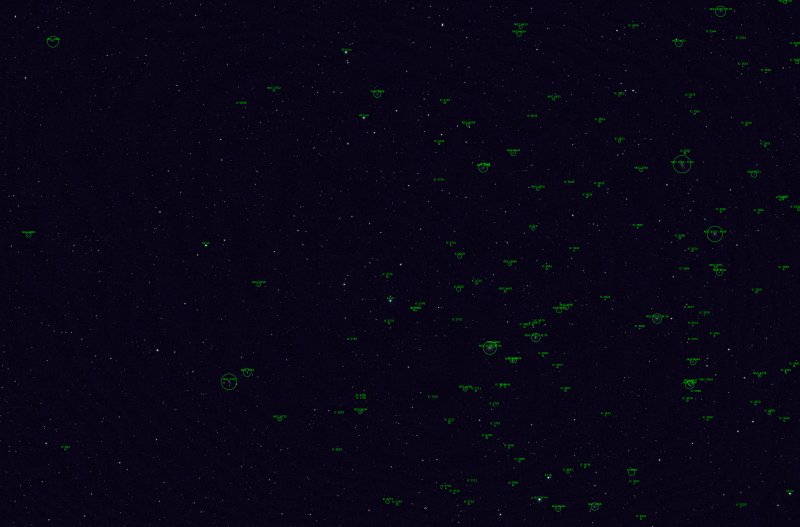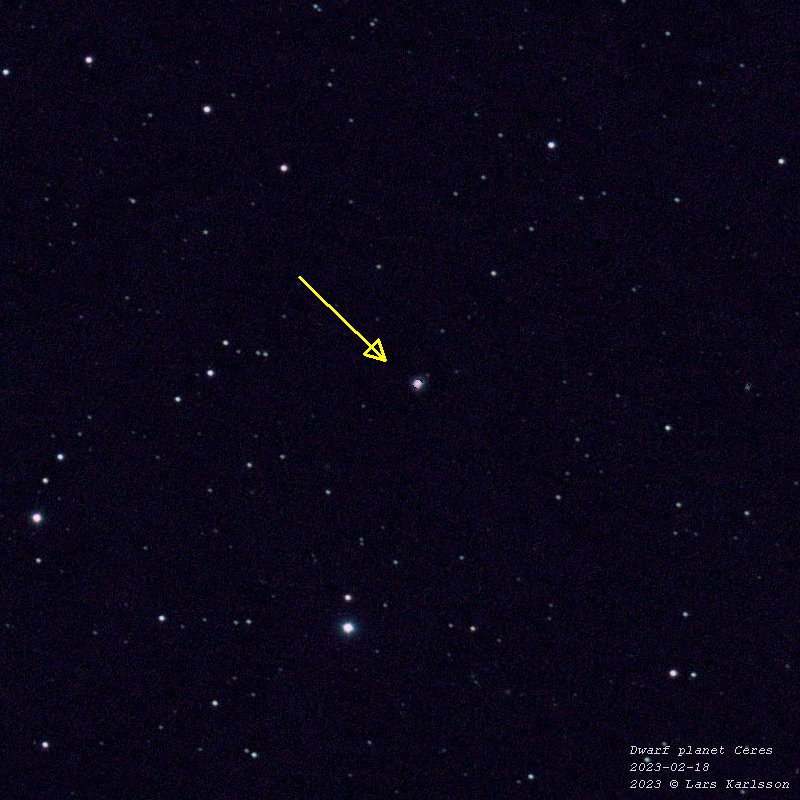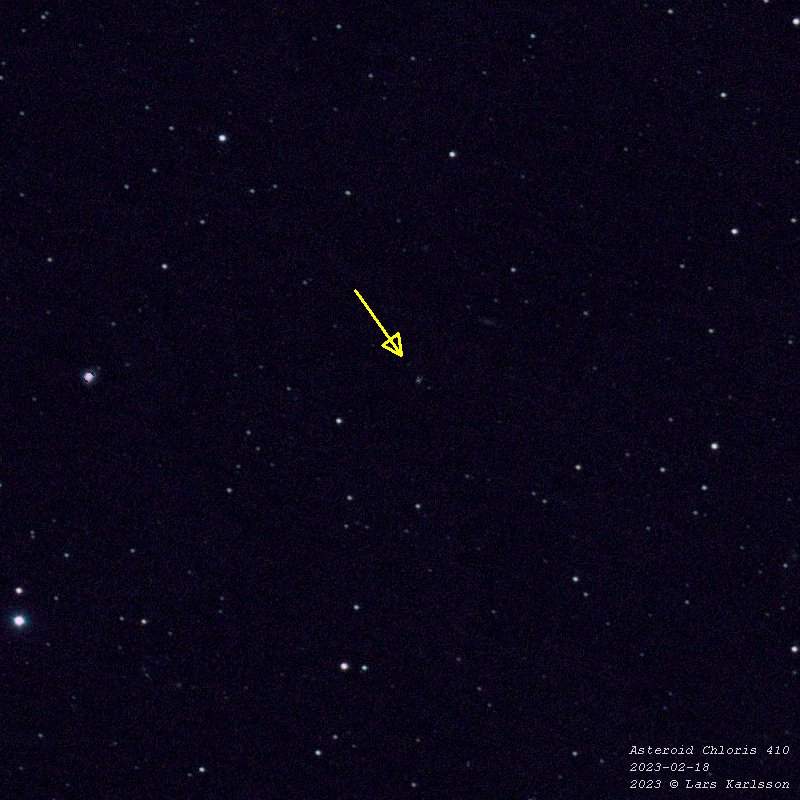| Object : | Asteroid, Ceres |
| Coordinates/Direction : | - |
| Object size : | 939 km |
| Object magnitude : | 6.7 - 9.32 |
| More to know : |
You can read more about the asteroid at Wikipedia:
https://en.wikipedia.org/ wiki/ Ceres (dwarf planet)
|
| Exp. time : | 60x60 seconds, iso1600, dithering mode |
| Image process tool : | Siril, Gimp, Irfanview |
| Processing : | cal dark, flat |
| Weather clouds: | Clear Sky, -1o Celsius |
| Comment : |
When doing observations from the balcony tonight I found that the asteroid Ceres was waiting for me on the sky in East.
This asteroid is really interesting.
In the 18th they spend a lot of resources to find more planets.
The year 1801 the first new planet was found they thought.
50 years later it was classified as an asteroid, now it's called a dwarf planet.
It's size is 939 km, much less than our Moon's 3474 km.
This photo is the first light with my rebuilt SkyWatcher EQ6 mount, working so nice, a great night ! |
| Comment : |
On the simulation with skychart from CdC
I can see that there were not only Ceres in the field, there are three other asteroids too.
They are much weaker and maybe not visible on the photo, I will look for them and identify them if possible. |
| Comment : |
In the surrounding area to Ceres there are plenty of galaxies.
I have done a plate solve with: Astrometry.net to find these deep sky objects.
Look at the high resolution image and zoom in, there are so many ! |
| Comment : |
A zoom in on Ceres, it's in the center.
Even if it's of only magnitude 7.3 this night it still oversaturate the sensor, to the eye it's invisible.
These day's software are fantastic, they control the mount and center the camera on the object with high precession.
Of the other three asteroids I have identified two of them on my photo. |
| Comment : |
Next asteroid I identified is Chloris 410, much weaker with its magnitude of 12.5.
It moves 21" per hour relative the stars.
It was discovered 1896, described as a big asteroid, 123 km. |
| More info : | Chloris 410, Wikipedia |
| Comment : |
Third asteroid, Tiflis 853 has a magnitude of 13.6.
It moves 18.9" per hour relative the stars and where the arrow is is a elongated object that must be this asteroid.
The radius of the Tiflis is 11 km, about the size that killed the dinosaurs. |
| More info : | Tiflis 753, Wikipedia |
| Comment : |
Fourth asteroid, Modena 3344, it's impossible to find on the photo because of its weak brightness, only magnitude 17.
From a darker place and with longer exposure it shouldn't be any problem.
It moves 19.1" per hour relative the stars and it's close to the lower bright star in the circle.
A small asteroid doesn't normally have a spherical shape, it has not enough gravity to give it that shape.
Its size is about 3 km. |
| More info : | Modena 3344, Universe Guide |
 (Click on image and get a full resolution image in a new window)
(Click on image and get a full resolution image in a new window)

 (Click on image and get a full resolution image in a new window)
(Click on image and get a full resolution image in a new window)



